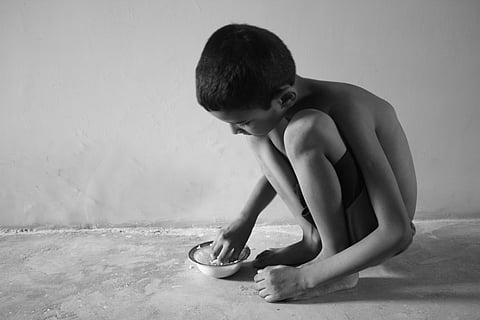Tackling child stunting needs an equity lens on India’s nutrition divide
Child stunting in India has declined from 48% in 2006 to 35% in 2021.
Yet caste, tribe and community-based disparities continue to drive malnutrition.
New studies show SC and ST children face a far higher prevalence of stunting than others.
Inequities in maternal nutrition, healthcare access and dietary diversity persist.
Experts call for equity-centred, community-led interventions to close the nutrition gap.
Child stunting in India has declined significantly since 2006, dropping from 48 per cent to 35 per cent in 2021. Yet beneath this progress lies a stark reflection of the deep-rooted social inequalities that persist across the subcontinent.
A recent study published in Nature found that in India, the incidence of stunting disproportionately affects children from marginalised communities, particularly Scheduled Castes (SC) and Scheduled Tribes (ST), at 39.2 per cent and 40.9 per cent respectively. In this sense, stunting can be seen as a manifestation of the inequalities experienced by these disadvantaged groups.
Empirical evidence from a 2024 research further substantiates this disparity. The authors, Mriganka Dolui and Sanjit Sarkar, highlighted that the overall prevalence of stunting is markedly higher among SC-ST children (39.6 per cent) compared to their non-SC-ST counterparts (33.27 per cent). The gap is even wider in the 15-30-month age group, where 44.86 per cent of SC-ST children are stunted compared to 36.9 per cent among non-SC-ST children.
Gender differences are also evident, with SC-ST boys (40.52 per cent) showing a higher prevalence of stunting than non-SC-ST boys (33.92 per cent). Furthermore, within the Muslim population, stunting is more prevalent among SC-ST children (38.95 per cent) than among non-SC-ST Muslim children (37.06 per cent).
Longitudinal data from NFHS-4 and NFHS-5 corroborate these findings. Despite overall progress in reducing child undernutrition between the two survey periods, the risk of stunting remains higher among socially disadvantaged groups. These ethnicity-based disparities underscore the persistent structural vulnerabilities faced by marginalised communities due to long-standing social discrimination.
Several studies have shown that marginalised households, often concentrated in the lowest wealth quintiles, though not exclusively, have limited access to nutritious food during children’s formative years. Factors such as a lack of maternal knowledge about childcare and restricted access to healthcare facilities contribute to stunting and other forms of undernutrition.
For instance, studies have found that tribal pregnant women in Jharkhand were less likely to consume all the iron and folic acid tablets provided to them compared with non-tribal women. Likewise, children from SC/ST communities tend to have lower rates of iron and vitamin supplementation. The Global Burden of Disease project ranks dietary risks as the second leading cause of death and disability in India. Yet average fruit and vegetable consumption remains alarmingly low, with lower-caste households consuming significantly less.
The consequences of child malnutrition are both immediate and long-lasting. Malnutrition is a major public health and developmental concern, with far-reaching health and socioeconomic implications. Malnourished children face increased morbidity and mortality, delayed mental development, poor school performance, reduced intellectual achievement, and a higher likelihood of functional impairment in adulthood.
The Government of India has introduced a range of programmes to address stunting and other forms of child undernutrition. However, the persistence of caste- and ethnicity-based disparities calls for a more nuanced and granular approach to closing the gap. Research-backed, community-anchored frameworks that integrate local authorities across all stages—design, implementation, and monitoring—can be critical.
Such an approach strengthens the supply side by ensuring reliable delivery of food supplements, fortified nutrition, and maternal and child health services through well-functioning institutions. At the same time, it enhances the demand side by raising awareness, building trust, and empowering households to actively seek and utilise these services. In doing so, it tackles not only the provision of nutrition but also the willingness and ability of families to access it, thereby bridging the gap that often undermines top-down interventions.
Looking ahead, policy must explicitly address the structural inequalities that exacerbate nutritional deprivation among marginalised communities. This entails strengthening child nutrition schemes, promoting women’s economic empowerment, enhancing maternal education and nutrition, improving maternal and child healthcare, and expanding access to quality primary health services. Policy design must move beyond a narrow focus on economic and health outcomes to embrace a broader equity lens, one that systematically dismantles barriers rooted in social hierarchy and discrimination.
In essence, combating child stunting in India requires more than technical interventions; it demands an integrated, equity-driven strategy that aligns nutritional policy with the broader goals of social justice and inclusive development.
Manu Prathap is a research assistant at Indian Institute of Management Tiruchirappalli and Dinesh B is a research staff member at Indian Institute of Management Tiruchirappalli.
Views expressed are the author’s own and don’t necessarily reflect those of Down To Earth

